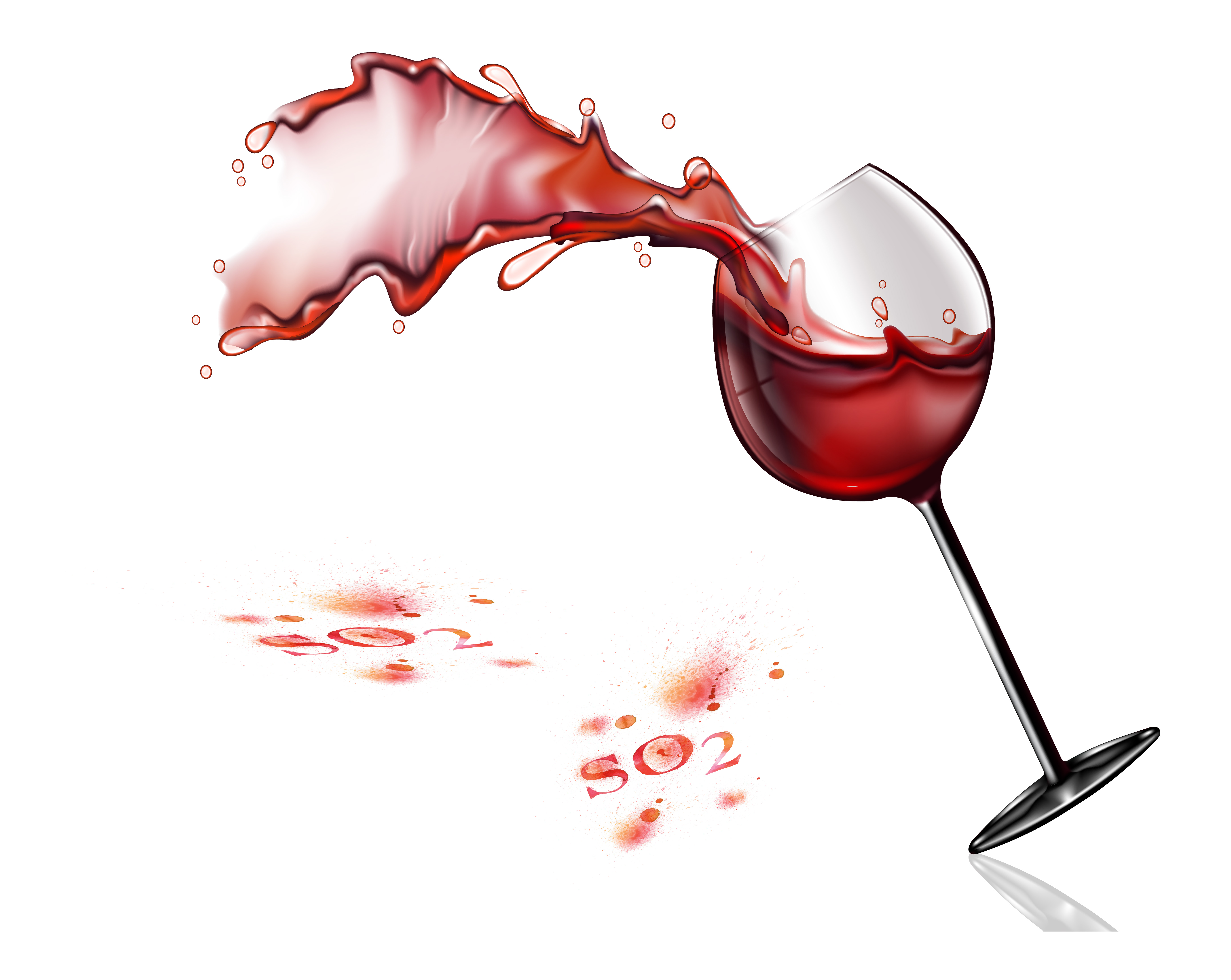By Fulvio Mattivi
A series of paper released from Italian scientists are opening new doors for better understanding the chemical changes occurring in wine during ageing and offer new prospects for more precise use of SO2 in winemaking. The reaction of sulfonation could be a good news for wine lovers!
Sulfonation, the addition of a sulfonic acid group (–SO3H) to an organic compound, is a widespread industrial process used in a diverse range of products, including dyes, pigments, medicines, surfactants, pesticides and organic intermediates. Moreover, sulfonation modulates the biological activities of a wide number of chemicals, such as drugs, toxic chemicals, hormones and neurotransmitters. What do have sulfonated compounds in common? Many sulfonic acids can be isolated, stored and shipped as an article of commerce for a simple reason: they are stable! So the take home message is that free form of sulfites (sulfite, bisulfite and sulfur dioxide) are largely converted during wine ageing into their stable sulfonates, modifying the composition of wine.
In aged wines, such as Amarone, Sagrantino, Tannat, considered in this study, and in general in wines subjected to long years of ageing in the bottle, such as the reserve sparkling wines of Trento doc, or the premium vintage Port wines, which are consumed at a considerable age, a large part of sulfites are converted into several sulfonates. I suggest that people sensitive to sulfites should consider consuming in moderation some of these wines. But remember: the half-life of sulfites in humans has been estimated to be about 15 min, and the associated problems should appear within a similar time. If you experience problems several hours after lot of drinks, don’t blame sulfites: it is a hangover!
Sulfites are a group of food additives widely present in our diet. Exposure to these substances is still a matter of concern: the list of food and beverages containing them is so long that would exceed the length of this commentary. It has been estimated that wine, together with meat preparations, are the main contributors to the exposure for adults and elderly (EFSA Journal 2016, 14, 4: 4438).
Today oenologists and winemakers recognise SO2 as an indispensable additive in winemaking, able to protect wine from various unwanted reactions. The use of this additive is controlled by legal limitations, but the recommended doses lacks precision and is still unknown why very similar wines consume differently the added SO2. Indeed, in spite of the historical use of sulfites in winemaking, our knowledge of the fate of sulfites in wine was still incomplete. New understanding came from two recent studies based on the “untargeted metabolomics”.
In the first one, Arapitsas et al (Metabolomics 2014, DOI: 10.1007/s11306-014-0638-x), evaluated the chemical implications of the temperature of storage of red wines, by following the kinetics of evolution over 2 years of several Sangiovese wines aged with two different storage conditions, optimum (cellar) vs domestic (house). The resulting “global picture” regarding metabolic changes in wine during storage highlighted for the first time a temperature-dependent pathway involving the addition of bisulfite to catechins and proanthocyanidins, leading to the formation of several sulfonated flavanols. This reaction was later reproduced in laboratory, leading to the discovery that wine sulfonated flavanols are hydrophilic compounds with increased solubility as compared to free flavanols, which can be produced also via cleavage of larger oligomers, the tannins. This reaction has peculiar sterical requirements, so that the main end-products isolated and structurally characterized were epicatechin 4β-sulfonate and procyanidin B2 4β-sulfonate (Mattivi et al, ACS Book Chapter 2015 DOI: 10.1021/bk-2015-1203.ch003).
The second study (Arapitsas et al., Journal of Chromatography A 2016, DOI: 10.1016/j.chroma.2015.12.010 ) focused on the fate of sulfites in white wines. Discovering, via untargeted metabolomics, the formation in wine of various sulfonated compounds: the S-sulfonated derivatives of cysteine, glutathione and pantetheine, and the sulfonated indole-3-lactic acid hexoside and tryptophol. Interestingly, the consumption of SO2 was promoted by the presence of higher levels of oxygen on bottling.
Finally, the journal Scientific Reports recently published the results of a third, “targeted” study conducted by a research team of Fondazione Edmund Mach and University of Trento (Arapitsas et al., DOI: 10.1038/s41598-018-19185-5). This study developed a new quantitative method, used to evaluate the importance of these reactions according to the different wine style and age.
The study published in Scientific Reports demonstrated that the quality of aged premium wines, as we know them today, is highly influenced by the addition of SO2. A very slow reaction between SO2 and wine tannins, thus the major responsible for the wine body, give products that highly characterised the chemical fingerprint of long aged red wines. Such a reaction could be co-responsible for the smoothing of very aggressive young red wines, even if this remains to be proved in the future.
Differently, white and sparkling wines were characterised by a relative fast reaction between SO2 and catabolites of the pathway of the amino acid tryptophan (a.k.a. indoles). These metabolites, with great concentrations in wines, could be responsible for the known phenomenon (among winemakers) that some wines unexpectedly need bigger doses. The same sulfonated metabolites could also influence the aromatic character of the wines.
Fulvio Mattivi (Italy) His main research activity concerned food and wine chemistry, investigating the different classes of polyphenols under the analytical, technological and nutritional point of view. After establishing in 2009 a state-of-the-art MS-based laboratory of metabolomics, where applications are developed spanning from plant extracts to biofluids, his research interests moved towards the search of biomarkers in food chemistry and human nutrition. He co-authored 150 research articles and 2 international patents. He is currently full professor of Food Chemistry at the Center Agriculture, Food and Environment (CAFE) of the University of Trento and affiliated to the Research and Innovation Centre of Fondazione Edmund Mach in San Michele all’Adige.


